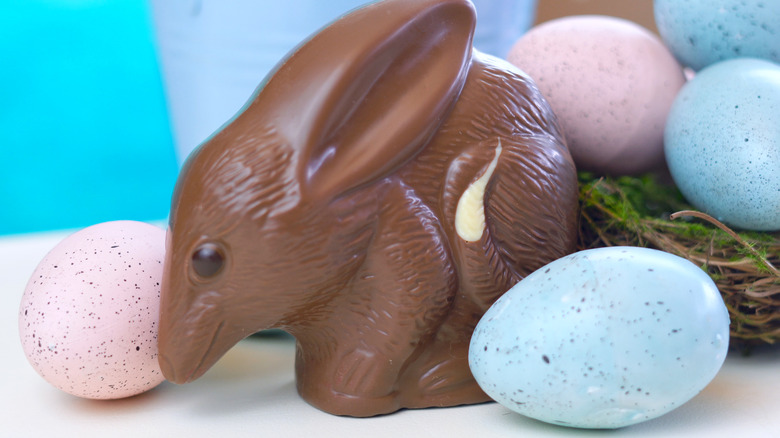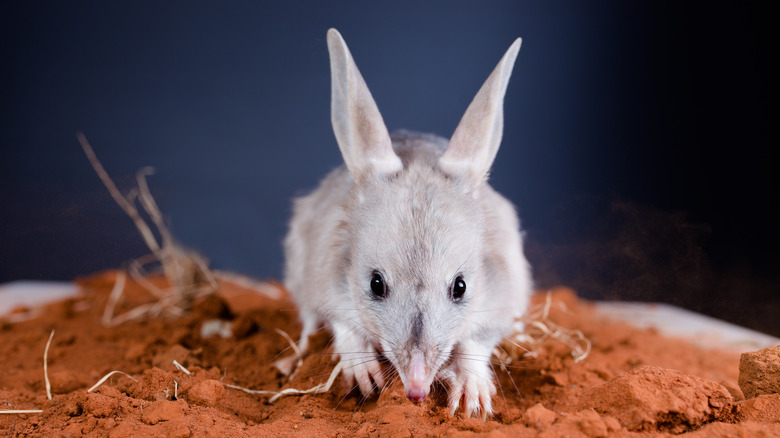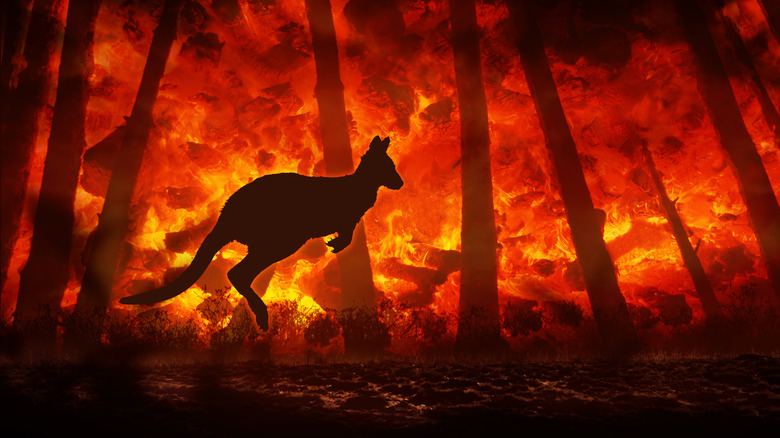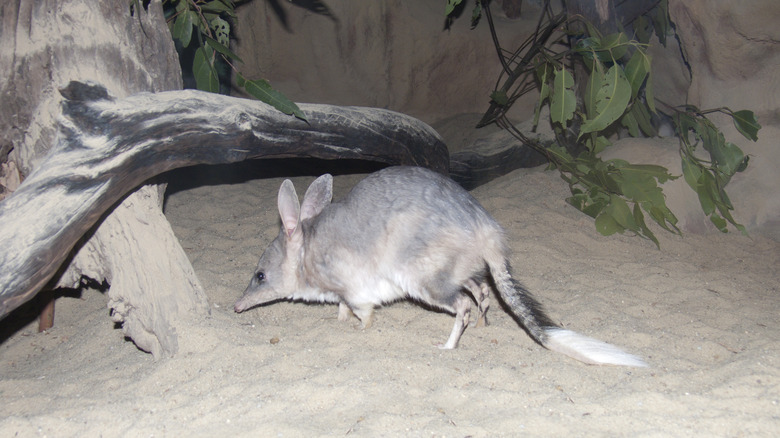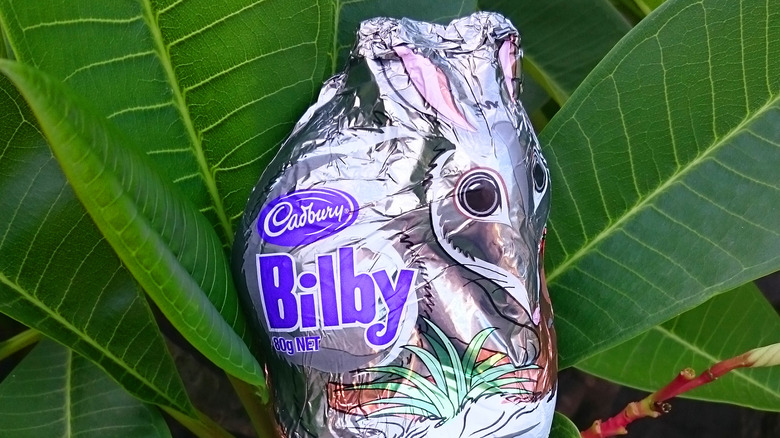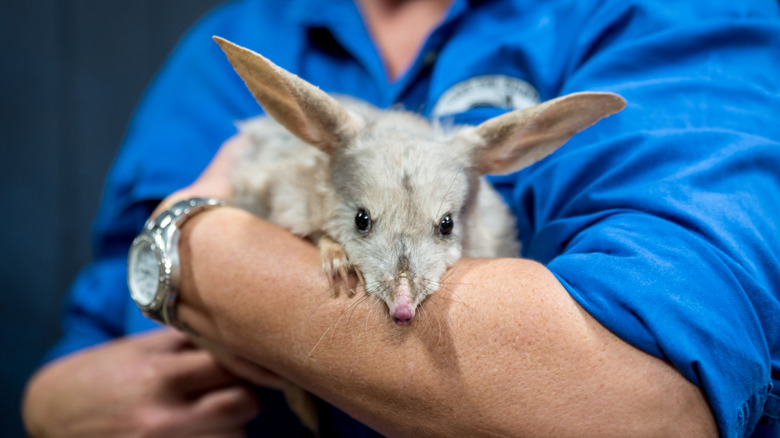Australia's Outback Version Of The Easter Bunny Isn't What You'd Expect
When you stop to think about it, the legend of the Easter Bunny seems like one of the rarer modern day holiday traditions. To celebrate the resurrection of Jesus, a giant, fantastical bunny rabbit comes to children's homes to deliver them chocolates and candy in an epic egg hunt. Only natural, right?
Although the origins of this tradition are uncertain, some think that the symbol of the rabbit used for Easter traditions actually dates back to a pre-Christianity springtime pagan tradition centered around the goddess Eostre (via ABC News). Eoster was the goddess of renewal, spring, and fertility. As such, eggs and rabbits — known for their voracious breeding — became symbols for the holiday. And after all these years, the tradition stuck, with bunnies, rabbits, and their respective chocolate forms lining the shelves of stores in springtime in many corners of the world. But in the Land Down Under, a different furry creature has become the symbol of Easter and spring, and it's called the bilby.
What is a bilby?
A bilby, about the size of your pet cat at home, is a marsupial like opossums and koalas, according to Bush Heritage Australia. With bluish-grayish fur, a pointed pink snout, and long ears, they look like a mix between a rabbit and an opossum. Bilbies are thought to have existed in Australia for 15 million years and go by 20 different names in Aboriginal dialects, where they are central to many songs and stories important to indigenous ceremonies (via Bush Heritage Australia).
To escape the heat of the day in the brutal Australian Outback, bilbies reside in burrows underground, which can be up to six feet deep, according to the Australian Museum. They are nocturnal and use their long noses to burrow for insects and fungi underground, listening with their long ears for sounds under the soil's surface. Bilbies don't need much water to survive in Australia's arid climate. In fact, they don't drink water at all, and their only source of hydration comes from the food they eat, according to Bush Heritage Australia.
The path to endangerment
Bilbies were once found across about 75 percent of Australia, according to the Australian Department of Agriculture, Water and the Environment. However, the arrival of European settlers in the late 1700s pushed these furry burrowers to be classified as a species vulnerable to extinction, and today their range spans only 15 percent of the continent, including remote regions in Western Australia, Queensland, and the Northern Territory (per Bush Heritage Australia, National Geographic). There were actually originally two different species of bilby — the Greater Bilby and the Lesser Bilby — but the latter became extinct in the early 1950s and today only the Greater Bilby (known as just "the bilby") remains, according to Bush Heritage Australia.
In addition to human developments destroying their habitats, bilbies had to compete with rabbits, which exploded in numbers across the continent and took over bilby burrows (via NPR). Plus, an increasing number of wildfires rampaging through much of Australia destroyed vegetation and hiding spots for bilbies, making them more vulnerable to predation by foxes or feral cats (via Bush Heritage Australia). As a result, there are estimated to be fewer than 10,000 bilbies remaining today.
An ecosystem engineer
The decline of bilbies has cascading effects for the rest of their ecosystem. Bilbies' burrows provide a habitat for more than 45 different species, like the king brown snake and the yellow-spotted monitor lizard, according to a 2019 study in the Journal of Zoology. In that study, researchers set up cameras inside the burrows of bilbies to determine just how many animals relied on them, and found hundreds of birds, reptiles, and mammals sharing the space (per National Geographic).
Bilbies traditionally inhabited many inhospitable regions of the Outback, where temperatures can soar above 100 degrees Fahrenheit and wildfires regularly occur. Without the bilbies' burrows, the other species that rely on them could lose their refuge from the heat and fires, becoming more vulnerable to extinction or endangerment as well, according to National Geographic. With a single bilby turning over roughly 20 tons of topsoil every year (via the Australian Wildlife Conservancy), the bilbies' constant digging also improves soil health, bringing nutrients to the surface for other animals, according to the World Wildlife Foundation.
The Easter sell
Because of their resemblance to the rabbit, bilbies were able to jump on the coattails of the Easter Bunny to help raise awareness about their declining numbers and miraculously keep them alive. It all started in 1968, when a 9-year-old Australian girl wrote a children's story about "Billy The Aussie Easter Bilby," which would go on to become a published book in 1979 (via NPR). That inspired an entire Easter Bilby campaign, in which the Easter bunny was replaced with the bilby in media portrayals and Easter goodies like chocolates.
Much of the money made in this marketing campaign was used for projects that reduced rabbit populations so bilbies could return to their old territories. It also went toward programs that bred bilbies in captivity to be released back into the wild (per NPR). The campaign raised awareness in even the most urban cities of Australia about what was happening in the remote corners of the Outback, and it was so effective that Australian kids began asking for candy from the bilbies instead of putting out baskets for the Easter Bunny.
Beyond Easter conservation
In addition to the Easter Bunny replacement campaign, many other organizations have been working to restore bilby populations to what they once were. In fact, the Australian government released a "Recovery Plan for the Greater Bilby" in 2019, outlining ways to protect bilby habitats, including partnering with indigenous communities to promote the preservation of the species. For example, the Kimberley Bilby Project in southern Australia is working with indigenous communities to use storytelling to increase awareness of the bilby's fate. In one project in the Sturt National Park in the northwestern Outback, a group of 10 translocated bilbies in 2020 had successfully reproduced to a population of about 60 in a survey conducted earlier this year (via the University of New South Wales).
If only the bilby could take on the voracious breeding habits of bunnies like they took on their Easter stardom, perhaps their numbers could return to a fraction of what they once were across much of the Australian Outback.
